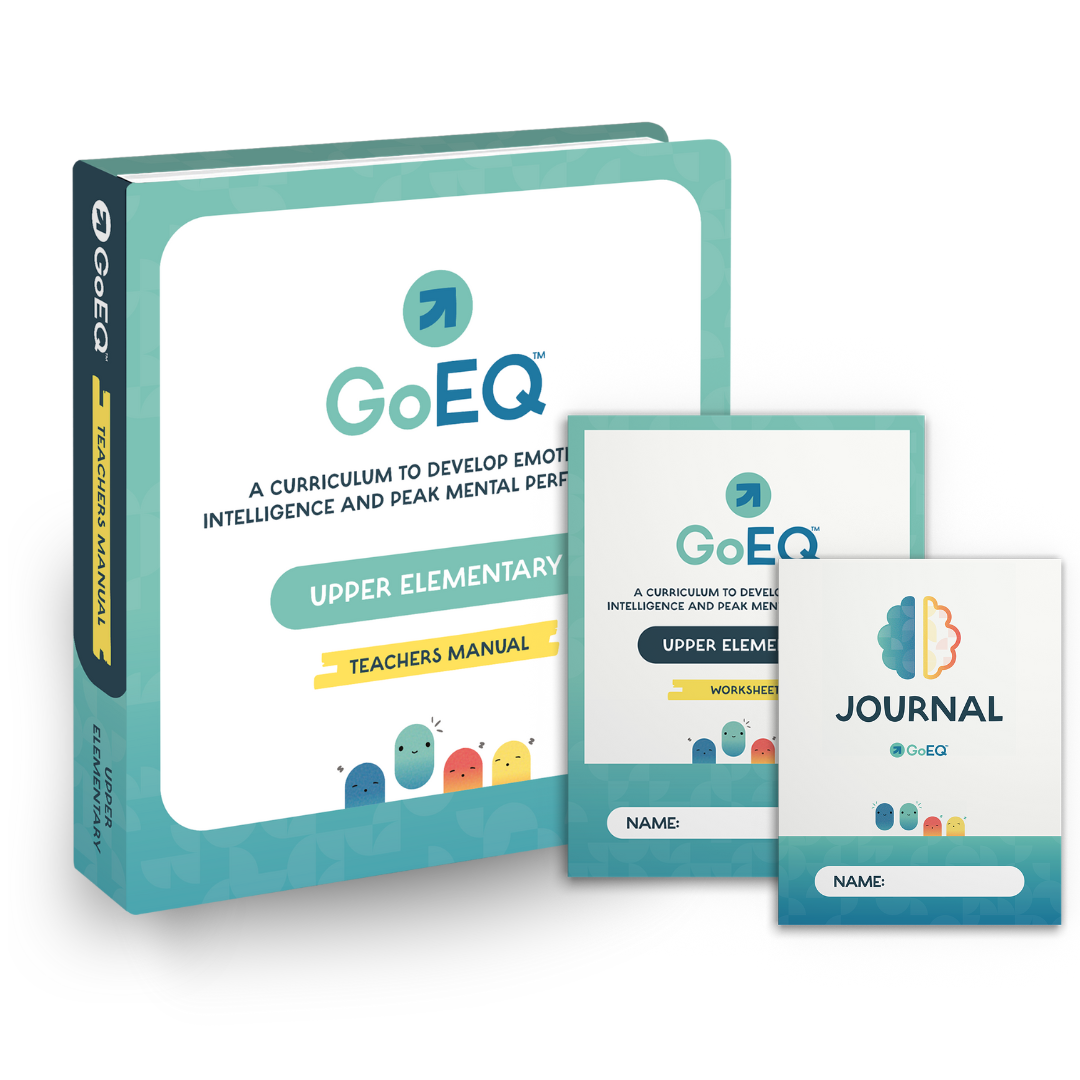The GoEQ™ Upper Elementary Curriculum is a Bible-based SEL curriculum for Christian schools, designed to nurture young minds with essential life skills for a brighter future.

Prevention is a key reason we created this program. By educating students in grades 3-5 on how to promote optimal mental health, grow their emotional intelligence, and optimize their brains, we give these students the tools they need to navigate life’s challenges for now and their future in healthy ways before unhealthy coping patterns can take root.
Key Features:

We provide the classroom with a comprehensive set of materials, curated to complement our curriculum. These resources are designed to streamline lesson planning and enrich classroom engagement, supporting you every step of the way.
Curious about what awaits you? We invite you to download a free sample of our curriculum.

At the Upper Elementary level, the GoEQ™ Curriculum is designed for students to create an interactive E.Q. journal using worksheets that are found at the end of each lesson in the Teacher’s Manual. All student worksheets are also found in the Student Worksheet Booklet for convenience and ease of printing and copying. These worksheets can be reproduced or photocopied for your personal classroom use.
If you are teaching a mixture of elementary grade levels, you may be wondering what level you should use for your classroom: Can I teach from one curriculum manual? Can I use both Lower and Upper Elementary? Should I be using both?
The Upper Elementary Curriculum is designed for grades 3–5, whereas the Lower Elementary Curriculum is for grades K–2. The choice of which curriculum to use in a mixed grade elementary classroom is best decided based on the number of students you have in each grade. However, if your upper elementary students have not been exposed to GoEQ™ previously, the Lower Elementary Curriculum will benefit them by providing a foundation for their education in emotional intelligence. For continued learning, consider using the GoEQ™ Upper Elementary Curriculum with your older students for reinforcement the following semester or year, or do a combination of the two throughout the year, being mindful of the level of the Upper Elementary with your younger students.
Each level of the curriculum is unique, bringing out various components of emotional intelligence to meet the needs of its intended age group. It is designed to be taught in succession to reinforce the fundamentals of emotional intelligence while giving students new concepts, habits, practical applications, and principles for mental health, as well as deepening their understanding and intellectual breadth. Taught in tandem, this curriculum set will provide the strongest education of the material. However, there are many classrooms that will cross the bounds of the recommended grades, and choosing which version to teach in such classrooms requires an understanding of the underlying differences between each level and a knowledge of your students’ current emotional and academic capabilities.
One of the biggest differences between the Lower and Upper Elementary levels is the GoEQTM Pre- and Post-Assessment tests. The Lower Elementary Pre- and Post-Assessments are given in an interview style and are shorter than the Upper Elementary Pre- and Post-Assessments, so it is much better suited for younger learners.
Across both levels, different concepts are covered in each unit. Unit 1 in the Lower Elementary introduces students to neuroplasticity through activities and illustrations, while Unit 1 Upper Elementary introduces students to how the brain connects and communicates. The Lower Elementary also takes more time at the beginning of the program to build the procedures around creating gratitude and E.Q. journals than the Upper Elementary.
Unit 2 covers the lifestyle habits that promote brain health. Each curriculum level covers both similar and different lifestyle principles with practical habits to apply them, and the students complete different activities in each level. Unit 3 is vastly different between these levels. In the Lower Elementary,
Unit 3 takes 22 days, slowly guiding students through understanding different abilities and skills to build their emotional intelligence. In the Upper Elementary, Unit 3 takes nine days. It has elements of review and expansion of the ideas from the Lower Elementary level, but also introduces students to new aspects and ideas under the theme of understanding emotional intelligence.
Unit 4 also differs greatly between the lower and Upper Elementary levels. In the Lower Elementary, Unit 4 helps students get more practice identifying thinking errors and checking and changing cognitive distortions (a skill they were introduced to in Unit 3) that are common in their age group. Unit 4 in the Upper Elementary introduces students to all 10 of the common cognitive distortions and gives them lots of time to practice untangling thoughts.
With this information in mind, the teacher can determine which curriculum is best suited for their students.